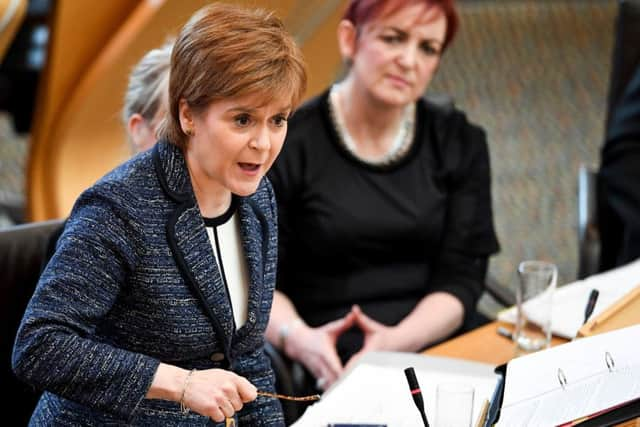Analysis: What has changed in year since Nicola Sturgeon's Indyref2 statement?
Britain’s leading psephologist’s reasoning that the First Minister had misjudged the public mood came a year to the day since she sought the permission to hold a second referendum on independence.
Despite recent good polling for the party, it would be hard to argue against the notion that they’ve suffered a dip in fortunes somewhat since that statement.
Advertisement
Hide AdAdvertisement
Hide Ad

A general election that saw some of their biggest names resigned to the ranks of former MPs has left the party unsure on their direction of travel regarding the second public vote on Scotland’s constitutional future.
We look at the big events since Ms Sturgeon told Holyrood that ‘the option of no change is no longer available.
Brexit woes on both sides
Brexit has been the elephant in the room of virtually every political discussion, announcement, and speech since 2016.


The shock decision to leave the European Union has ended careers, launched new ones, and shaken the very foundations of the political establishment.
As Prof. Curtice pointed out however, the assumption at the top of the SNP that Scotland’s pro-Remain voters would flock to the independence cause was ill-founded.
That lack of support for independence (one poll today shows that a majority of Scots oppose a poll in the next three years) has left Nicola Sturgeon and her Brexit minister Michael Russell walking something of a tightrope on the defining political issue of our times.
It would appear, at least for now, then the ongoing row over a ‘power grab’ over post-Brexit devolution of powers has occupied the Scottish Government enough to keep independence on the back-burner.
That is not to say that the UK Government has troubles to seek on that front as Theresa May struggles to unite her party behind a coherent Brexit vision.
Advertisement
Hide AdAdvertisement
Hide AdThose twin difficulties could explain the stalemate that both governments now find themselves in, with Mrs May and Ms Sturgeon due to meet tomorrow to try and hash out their differences.
Snap election
Last March, when Ms Sturgeon made her announcement that she would seek the power for another referendum, anyone suggesting a general election in 2017 would have been laughed off.
However, defying predictions (and some would argue defying logic) Theresa May decided to try and capitalise on the perceived weaknesses of Labour to boost her Commons majority.
While that didn’t work out for the Prime Minister, the SNP also suffered big losses, not just in terms of numbers (21 of their MPs were voted out) but in terms of some of the big figures they lost.
Westminster leader Angus Robertson was defeated, as was former First Minister Alex Salmond. Eilidh Whiteford, less high profile but credited with much of the policy work of the party at Westminster, also lost.
That, as much as anything Brexit-related, seems to have contributed to the apparent pause in preparation for the second independence referendum that Ms Sturgeon announced would give the people of Scotland a ‘clear choice’.
The Conservatives, who gained a dozen seats in Scotland last June, campaigned relentlessly on the theme of a second referendum, making strides not just in the seats they won, but across the country, often helping Labour challenge the SNP in the central belt.
Ms Sturgeon’s approach may have been a miscalculation, but as ever it is events that have caught up with her.
As it stands
Advertisement
Hide AdAdvertisement
Hide AdIf a week is famously a long time in politics, then the year that has passed since Ms Sturgeon first fired the starting gone on an indyref2 campaign must feel like decades.
A year on from that, one would expect that campaign to be in full swing, but with the Brexit row still continuing, and wounds still healing from a sobering general election result, the First Minister has shown an understandable reticence to push forward with a new constitutional vote.
The SNP will be keen to avoid criticism that they are prolonging the ‘power grab’ row to try and drum up support for independence, but also can’t be seen to simply acquiesce to the demands of the UK Government.
It remains an unenviable balancing act for a party and a First Minister who seemed untouchable just a few short years ago.
In the year since Ms Sturgeon told Holyrood she would pursue a vote, so much has changed, and yet the constitutional impasse remains virtually the same.
It would be a brave commentator who would even begin to predict what might happen in the next year.
